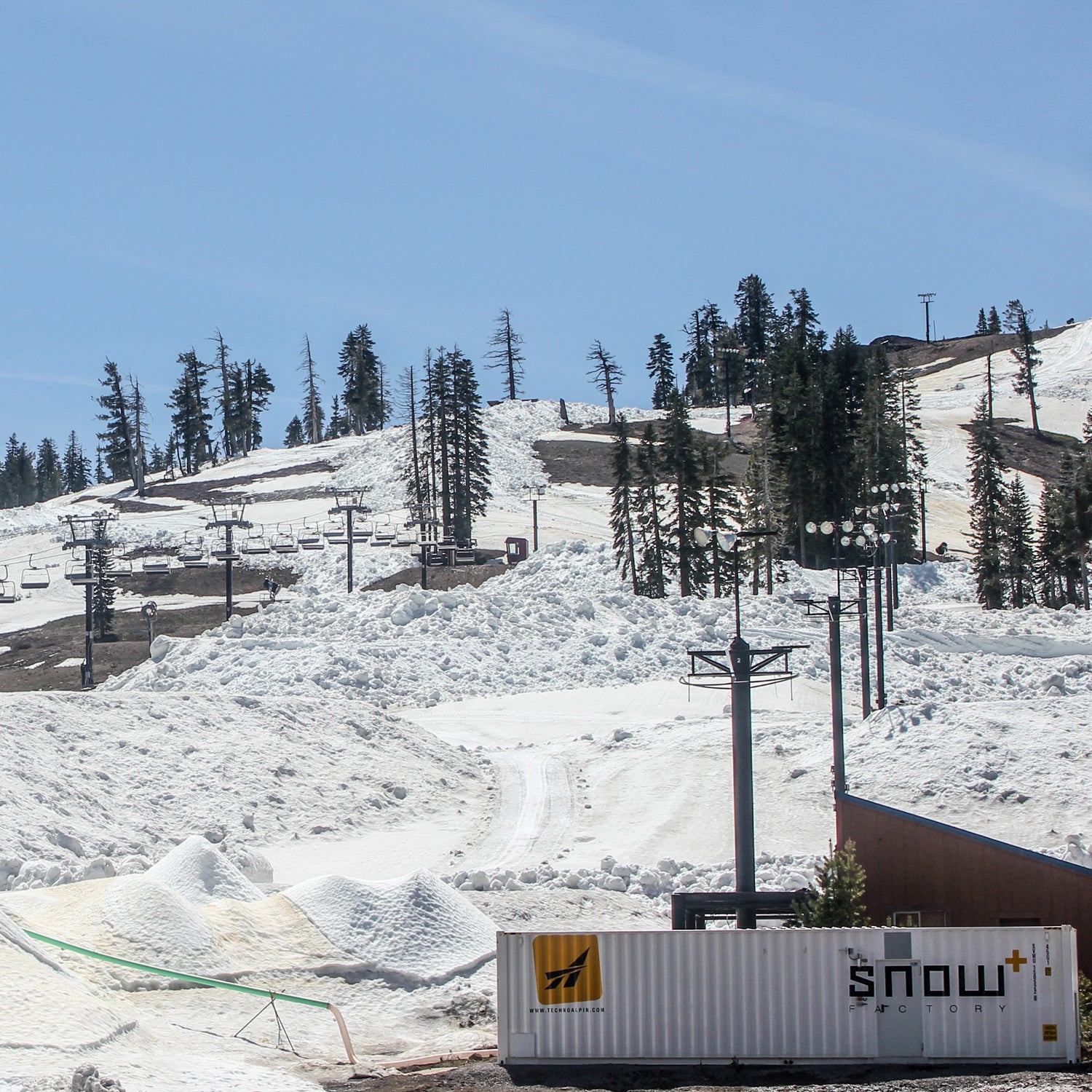, a small ski area at California’s Donner Summit near Lake Tahoe, will use new technology this summer that'll allow it to make snow regardless of air temperature.
Until now, snowmaking machines like the ones used at most U.S. ski resorts required air temperatures of 28 degrees or lower in order to operate. But Boreal’s machine, called the (made by Italian company TechnoAlpin), produces icy snow crystals inside a temperature-regulated sea container before spraying them onto the slopes.
“It can be 80 or 90 degrees outside and the Snow Factory can still make snow,” says Robin Smith, head of strategy and business development for the U.S. headquarters of TechnoAlpin. “The only catch is how long will the snow last in 90-degree weather? It’s so frozen, it’ll last longer than you think, but obviously, it’ll melt faster the warmer it is outside.”
Smith says the ideal range for the machine is anywhere above 28 degrees and below about 75 degrees.
Boreal is the first ski area in the U.S. to test the machine, but it's been used in Europe by a handful of national cross country ski teams and ski resorts. Boreal will be using the machine for their for skiers and snowboarders, which run from June to August. “It’s such a new product that nobody has ever seen what it’s capable of yet,” says Phoebe Mills, director of operations for Woodward Tahoe. “But Boreal has a uniquely perfect application for this. We want to be able to have our ski camps on snow through August. Plus, it’ll help us secure an early opening season this fall.” Boreal also plans to open for two public access ski days this summer, on June 18 and July 2.
So how exactly does the Snow Factory work? First, it arrives by truck in a giant steal shipping container. That container has large refrigerated cylinders where small ice crystals are made (sort of like a giant ice maker), and then a conveyor belts spits the ice crystals onto the ground. Boreal will be mixing the manmade snow with harvested 25-foot-high piles of snow they’ve saved from this winter to build lift-accessed terrain park features like jumps and rails.
Each Snow Factory requires about four to five times the energy consumption of a normal snowmaker, but it uses less water—about 13 to 18 gallons per minute, compared to a traditional snow gun’s 100 gallons per minute. One Snow Factory machine costs roughly half a million dollars, compared to a standard snow machine’s approximately $38,000.
These machines, in theory, could help ski areas facing warmer weather because of climate change. But many areas know that no amount of snowmaking infrastructure can replace mother nature as temps continue to rise. “When you look at studies predicting snowpack in the U.S. by 2100, there's a map showing 100 percent loss of snowpack at certain elevations on the East Coast and West Coast. What can resorts do about that?” asks Auden Schendler, vice president of sustainability at Aspen Skiing Company. “They can diversify their businesses. And they can improve snowmaking so you when you have smaller windows of cold temperatures, you can blast a huge volume of snow out…but if that's our response to this bigger issue, then we've got a problem. When you start looking at the idea of adaptation, you realize there is no adaptation and it sort of pushes you into the climate activism channel.”
For their part, TechnoAlpin isn’t positioning their machines to replace normal snowmaking technology or as the last, best chance to save ski areas. They know the size, price tag, and energy usage are too large. “You wouldn’t install these all over a ski area and hope that’s the future of snowmaking,” says Smith. “It’s more for special events, when nothing else works. We think the biggest application will be tubing parks and rail parks, places where you’re not talking about a huge amount of snow.”


